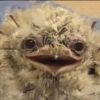hi!
are there any ways to define a specific species, kinda like marks or patterns found on some specific sp?

hi!
are there any ways to define a specific species, kinda like marks or patterns found on some specific sp?
hi!
are there any ways to define a specific species, kinda like marks or patterns found on some specific sp?
That is the only way to visually identify any ant. You read from dichotomous keys and and morphological descriptions.
Edited by Batspiderfish, December 24 2016 - 6:00 AM.
If you've enjoyed using my expertise and identifications, please do not create undue ecological risk by releasing your ants. The environment which we keep our pet insects is alien and oftentimes unsanitary, so ensure that wild populations stay safe by giving your ants the best care you can manage for the rest of their lives, as we must do with any other pet.
Exotic ants are for those who think that vibrant diversity is something you need to pay money to see. It is illegal to transport live ants across state lines.
----
Black lives still matter.
In many cases with practice you can identify many species by looking at them. However most species will require the aid of a microscope and literature appropriate to the ants you are working with.
0 members, 1 guests, 0 anonymous users